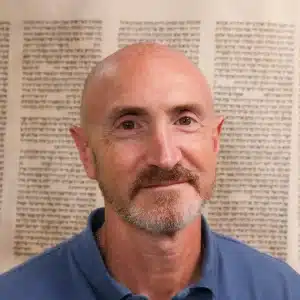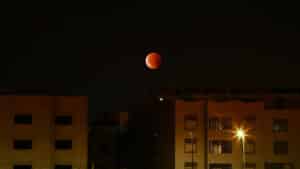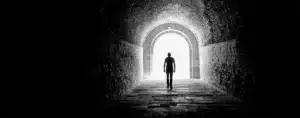“And when He had taken some bread and given thanks, He broke it and gave it to them, saying, ‘This is My body which is given for you; do this in remembrance of Me'” (Luke 22:19).
Yeshua’s interpretation of the custom of the breaking of the matzah at his last Passover Seder infuses every other Passover Seder with the memory of his unavoidable presence. The meaning of this broken matzah tradition (called the “Yachatz”) in the Seder can only find its full meaning in Yeshua. In the Yachatz ceremony, the middle matzah is removed from a single pouch containing three matzahs. The middle matzah is broken, wrapped in a cloth, hidden (Tzafon), then brought back to the table to be eaten together with the third cup of wine (called the Cup of Salvations).
Three Traditions
The People of Israel
One tradition explains the symbolism of the three matzahs in a single pouch as a reference to the people of Israel who are comprised of the priests (top matzah), Levites (middle matzah), and the house of Israel (bottom matzah). But this interpretation cannot explain the meaning of the Yachatz. Why is the middle matzah broken if the Levites were never broken, symbolically or otherwise?
There are two other traditional Jewish explanations, however, which seem to bring us closer to the New Testament’s interpretation.
The Patriarchs
One tradition interprets these matzahs with reference to the three patriarchs: Abraham, Isaac, and Jacob. In this tradition, the breaking of the middle matzah appears to be an allusion to Isaac’s symbolic death, burial, and resurrection from the dead in Genesis 22. In this traditional interpretation, the ceremony of the Yachatz offers an incredibly beautiful picture of what actually (not symbolically) happened to Yeshua, and in the breaking of the matzah, we are reminded that God has provided a Passover lamb (Gen 22:8; Isa 53:7; John 1:29).
God’s Attributes
Another traditional interpretation, the Jewish mystical interpretation, relates the one pouch with its three matzahs to the one God and three of his emanations (attributes). The middle matzah, according to this tradition, is allegorically associated with God’s wisdom (chokmah). The mystical interpretation, though highlighting the theological significance of the single bag with three matzahs (i.e., God’s divine unity in plurality), leaves unexplained the meaning of the breaking of the middle matzah. Why, or should we ask when, was God’s wisdom broken? The New Testament provides the answer! According to the New Testament, Yeshua is the embodiment of God’s divine wisdom (John 1:1; 1 Cor 1:24) who was broken, buried, and brought back to life (1 Cor 1:24)!
Why, or should we ask when, was God’s wisdom broken? The New Testament provides the answer!
The traditional Passover Seder is ancient; and Yeshua’s performance and interpretation of the Yachatz in the New Testament is not only the oldest recorded reference to this custom in any of the Jewish sources, it also happens to provide the interpretation which makes the most sense. And one day, every Jewish person sitting at the Passover table will see with open eyes how clearly this custom points to Yeshua’s unavoidable presence at the Passover table. O Lord, please haste the day!
“When He had reclined at the table with them, He took the bread and blessed it, and breaking it, He began giving it to them. Then their eyes were opened and they recognized Him” (Luke 24:30-31a).










